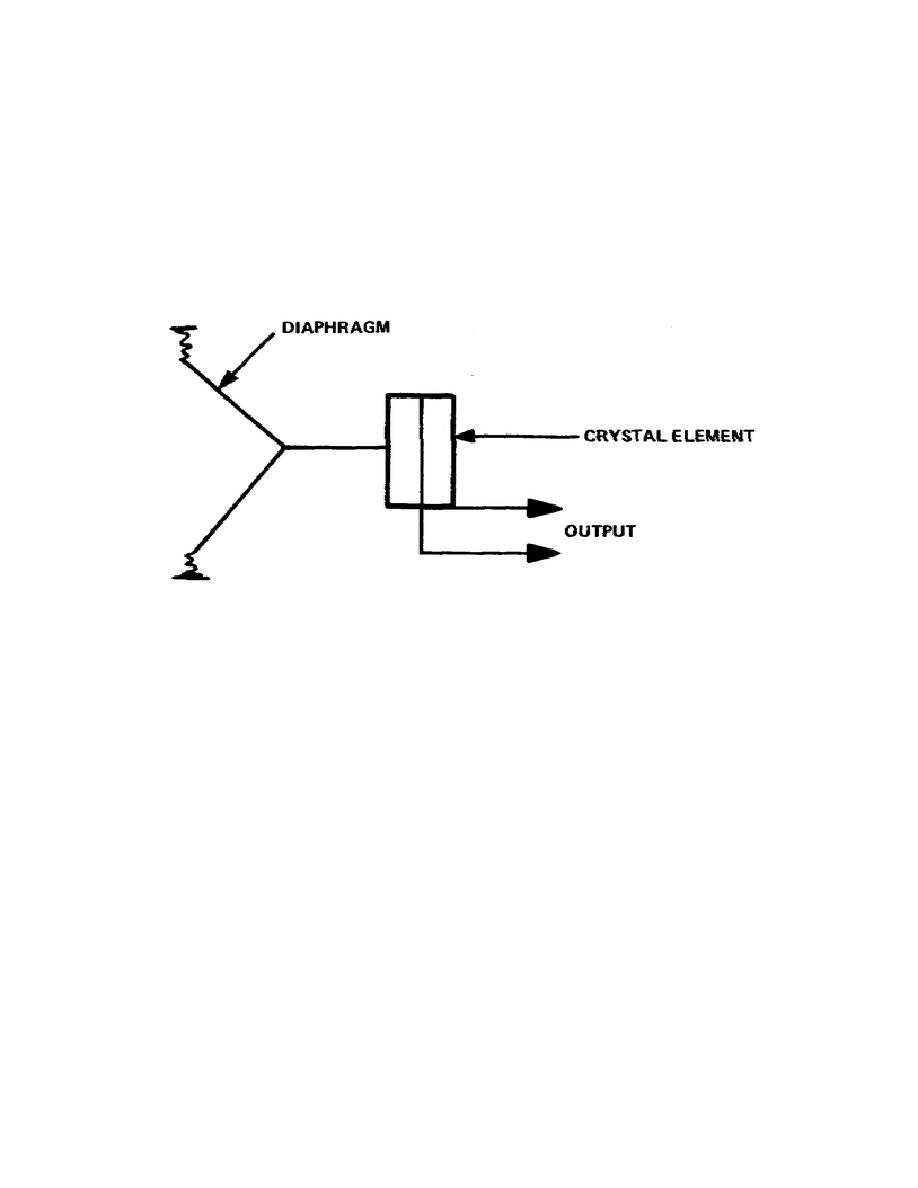
3.
Crystal Microphone. The crystal microphone uses one or more Rochelle salts placed in such a
way that when a sound wave strikes them they bend or twist. This action produces an electrical current
called the piezoelectric effect (pressure electricity).
a. When exposing the crystal to a mechanical stress such as a sound wave striking a diaphragm
(bimorph) or the crystal itself (sound cell), a minute current develops which is directly proportional to
the mechanical pressure.
b. The Bimorph and Sound Cell (trade names) make up the two most popular types of designs
for crystal microphones (fig 2-26).
Figure 2-26. Bimorph microphone
c. In the Bimorph, sound waves strike the surface of the diaphragm, creating pressure. The
crystals consist of two slabs, separated by a thin piece of foil, which are connected to one side of the
external circuit. The outer surfaces of the crystal slabs covered with foil connect to the other side of the
external circuit.
(1) Frequency Response: 80 - 6590 Hz
(2) Directivity: Nondirectional
(3) Impedance: High
(4) Other Characteristics: Pressure-operated, inexpensive and small in size
d. Sound Cell Characteristics. Lacking a diaphragm, the sound cell is directly activated. Sound
waves strike the crystal elements which are stacked in a pile. This bends and twists the crystals, creating
an output voltage.
27



 Previous Page
Previous Page
